- Home
- insider picks
- news
- I've worked in specialty coffee for almost a decade — here are the best coffee brands and single-origin beans I've tasted
I've worked in specialty coffee for almost a decade — here are the best coffee brands and single-origin beans I've tasted
Dylan Ettinger

When you buy through our links, we may earn money from our affiliate partners. Learn more.
- I've worked in the specialty coffee industry for almost a decade and have tested many single-origin beans, which are a good indicator as to the quality and skill level of a roaster.
- Here are the 10 best brands I've tested and their single-origin beans.
- Read more: The best French presses
As an obsessive coffee fiend, I've tasted many cups of coffee in my lifetime.
I've also spent most of the last decade working in the specialty coffee industry. I built up my skills and learned the ins and outs of coffee as a barista, which led to an opportunity to help open and develop the menu for a cafe in my home town. After that, I spent five years behind the scenes for a specialty coffee company in Los Angeles. As I said, I've tasted many cups of coffee.
There's plenty of great coffee out there, but ask any self-respecting coffee fiend and they'll point you in the direction of single-origin whole beans as the best coffee you should be drinking. Single-origin beans are a big part of the third-wave movement in coffee and it's one of the biggest indicators of quality and skill for roasters, which I get into it more here. That's what I've been drinking for years and chose to test that category for this story.
But since you're probably most interested in the best coffee, we'll get right to it. Click on a link below to head directly to the brand's review, or just keep reading to get a look at everything.
The best coffee beans you can buy:- Dark Horse Coffee Roasters — Ethiopia Guji Walichu Wachu
- Hopscotch Coffee — Mexico Oaxaca
- Máquina Coffee Roasters — Los Lesquines Lot 44 and Los Tucanes
- Blue Bottle — Guatemala Huehuetenango Finca La Esperanza
- Pachamama Coffee Cooperative — Guatemala and Ethiopia
- La Colombe — Congo
- Counter Culture Coffee — Colasay, Kabeywa, and La Golondrina
- Heart Roasters — Ethiopia Worka Sakaro, Ethiopia Yukro, and Ethiopia Gedeb
- Colectivo —Sumatra
Dark Horse Coffee Roasters — Ethiopia Guji Walichu Wachu
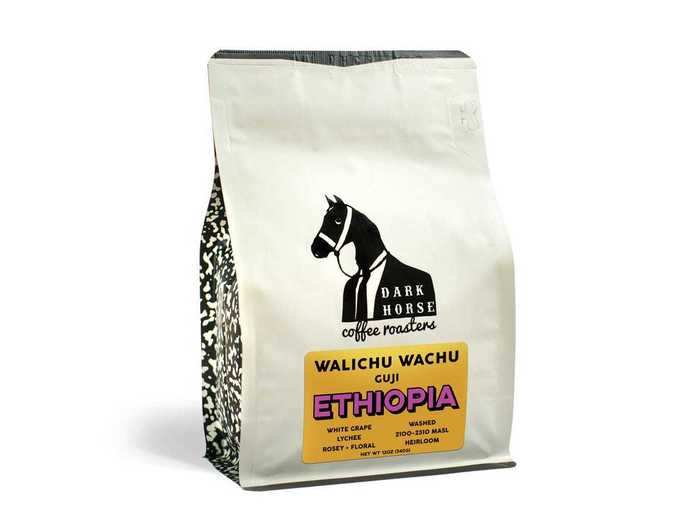
Dark Horse Coffee Roasters is a roastery founded in 2013 by Bryan and Daniel Charlson in San Diego. They proudly point to their close relationships with the farmers they work with. Two months of the year are spent traveling and meeting with the farmers who produce their coffee.
Origin: Ethiopia. When educating others about coffee, I like to start with Ethiopia because the coffees stand in strong contrast to the flavor profiles from other regions. It's easy for someone to tell the difference between an Ethiopia and everything else because the region produces beans that usually have more of a fruity, citric, and juicy profile.
Varietal: Heirloom
Roast: Light
Tasting notes: I was very impressed with their Ethiopia Guji Walichu Wachu. Dark Horse suggests notes of white grape and lychee, which describe the taste of this cup perfectly. This is a great example of what makes coffees from Ethiopia stand out. It's fruity, bright, and juicy in a way that pops out and boldly sets itself apart from other regions.
Hopscotch Coffee — Mexico Oaxaca
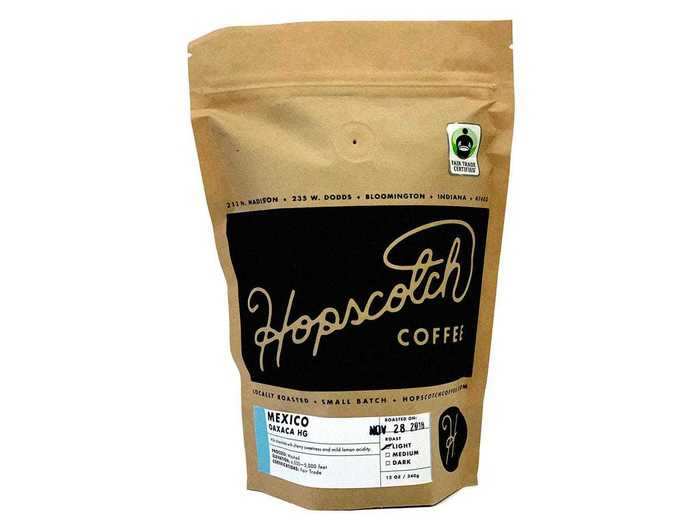
Hopscotch Coffee, located in my former hometown of Bloomington, Indiana, has deep ties to the local music and art communities. Being so involved in creative communities can help roasters develop the skills and understanding necessary to excel in the third wave movement. Coffee is a collaborative effort between the growers, importers, roasters, and baristas. Roasting and serving great coffee is a community effort and when understood and implemented properly, these ideas can manifest truly delicious and interesting coffee.
Origin: Mexico
Varietal: Unknown
Roast: Light
Tasting notes: The water-processed Mexico Oaxaca beans are rich and satisfying, with just enough brightness and nuance to keep things interesting. Mexico is not known for being one of the top coffee-producing countries and I've encountered dismissive attitudes from some experts in regards to coffee from this region. The quality of this roast proves that Hopscotch really knows what they're doing. It really shines in a French press, so be sure to give that brewing method a try if you pick these up.
Máquina Coffee Roasters — Los Lesquines Lot 44 and Los Tucanes
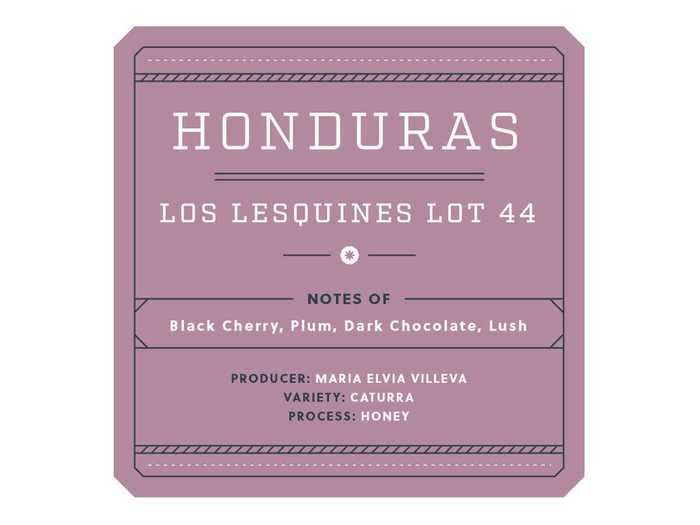
Máquina is a small roasting operation in rural Pennsylvania founded by industry veteran Gabe Boscana, and it has a bit of a non-traditional approach. In this case, that means they focus on roasting and distributing their coffee without a brick-and-mortar store or cafe. This operation allows the company to focus all of their attention on the art and craft of roasting, which leads to delicious results. Word of caution though — these are small-batch roasts so quantity is limited. I tried and loved the Los Lesquines 44, but it's unfortunately no longer available.
Origins: Honduras (Los Lesquines Lot 44), El Salvador (Los Tucanes)
Varietals: Caturra (Los Lesquines Lot 44), Bourbon and Pacas (Los Tucanes)
Roasts: Unknown
Tasting notes: I knew the Los Lesquines Lot 44 coffee was special as soon as I opened the bag and the aroma hit me. This Honduras is a "honey processed" or "pulp natural" coffee, which means the pulp of the coffee cherry is mostly removed, but instead of washing the beans completely before drying, they're left with some of the pulp still attached. The pulp of the coffee cherry ferments and leaves the bean with more of a fruit flavor.
This produces an extremely unique cup that tastes sweet, chocolatey, fruity, and a bit creamy. These flavor notes combine in a way that makes this coffee taste like a chocolate-covered cherry. If you're the type who enjoys coffee after dinner or with dessert, this is a perfect cup. The Los Lesquines stands out as one of my favorite discoveries of the past few years. I can't recommend this one enough and am sad it's no longer available.
If you miss out on the impeccable Los Lesquines, Máquina also has a Los Tucanes from neighboring El Salvador. Grown from the Bourbon and Pacas varietals, this coffee has apricot, praline, and caramel flavors. I was surprised by how uniquely fruit-forward this roast was in comparison to the more chocolatey coffees Central America is known for. Máquina has the ability to pick out exceptional coffees and roast them in a way that brings out their most unexpected attributes.
Blue Bottle — Guatemala Huehuetenango Finca La Esperanza
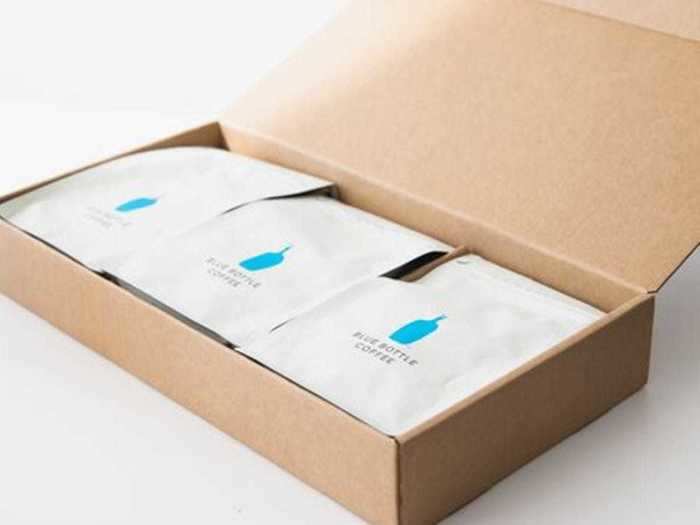
Blue Bottle is one of the biggest names in third-wave coffee. They launched in the early 2000s in Oakland, California, and made a name for themselves with their coffee and stylish cafes. Since then, they've seen significant growth with cafes opening all over the US, as well as international expansions. This level of expansion can often lead to a decline in quality control due to shifting priorities away from craftsmanship toward mass production, so I was curious to see if they were able to maintain the quality that I was so impressed by when I had my first cup of pour-over coffee from Blue Bottle in 2010.
Origin: Guatemala
Varietal: Unknown
Roast: Medium
Tasting notes: Guatemala is one of the most popular origins among coffee fanatics because the region is known for producing sweet, chocolatey coffee with low acidity. Guatemalan coffees usually have a broad appeal to coffee lovers, so a quality Guatemala can be an important metric of a roaster's competency.
Blue Bottle did a great job of showcasing the strength of the region with the Guatemala Huehuetenango Finca La Esperanza. This one is chocolate-forward with a hint of vanilla, and it's very balanced. It's a very easy cup to drink, very enjoyable, and perfect for any occasion. Rest assured, Blue Bottle is still roasting delicious coffee despite its massive growth.
Pachamama Coffee Cooperative — Guatemala and Ethiopia
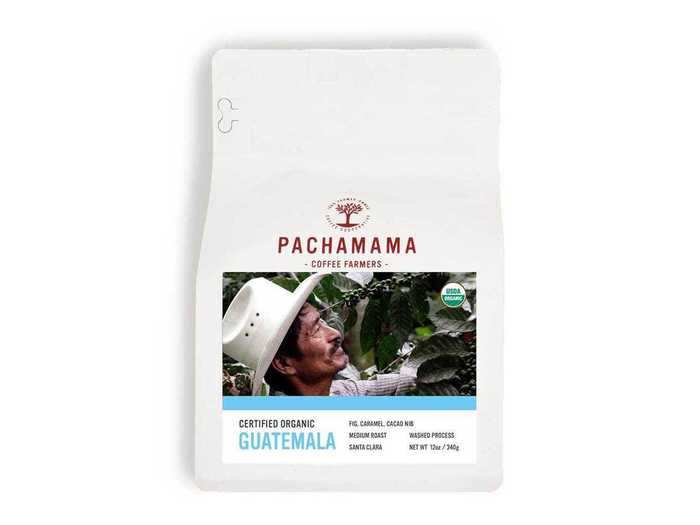
One major point in the philosophy of third-wave coffee is the importance of maintaining ethical and sustainable business partnerships with farmers. Coffee is usually grown in remote places where other crops are difficult to grow, and educational and economic opportunities are limited, so it's important to support the communities and farmers.
Pachamama is cooperatively owned by thousands of farmers all over the world, which allows them to have collective control and ownership of the coffee they produce. According to Pachamama, farmers set their own prices for their green coffee, which usually comes out to 60% higher than fair trade minimum. On top of this, farmers receive 100% of the profits from the sale of their coffee. You can read more about the practices of the co-op on their website.
Origin: Santa Clara, Guatemala (Guatemala); Yirgacheffe, Ethiopia (Ethiopia)
Varietal: Arabica Bourbon, Typica (Guatemala); Native cultivar (Ethiopia)
Roast: Medium (Guatemala) and Light (Ethiopia)
Tasting notes: I tried a few of their coffees and was most impressed by their Guatemala and Ethopia roasts. The Guatemala makes a sweet, satisfying cup with notes of fig and caramel. It's a great example of a top-tier Central American coffee.
The light-roast Ethiopia had notes of sweet nectarine, jasmine, with just a hint of citrus. It was a bit more well rounded than other Ethiopias I've tried, and the berry and citrus flavors were not as prevalent. Both coffees were of very high quality and are a testament to what can be achieved when farmers are empowered to perfect their craft.
La Colombe — Congo
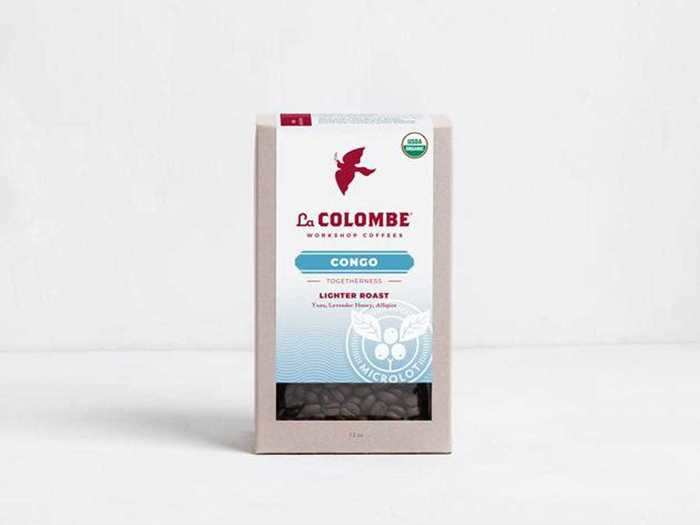
With 30 cafes in operation, La Colombe is one of the most visible specialty coffee companies in the US. They got their start in Philadelphia in 1994 and have since evolved into a specialty coffee powerhouse.
One of the things I look for in coffee is unexpected origins because they'll probably have a very unique flavor. In the past, La Colombe has roasted coffees from places like India and Thailand that were out of the ordinary and very enjoyable.
Origin: South Kivu, Congo
Varietal: Unknown
Roast: Light
Tasting notes: Congo is not near the top of the list of African coffee production, but La Colombe, through their extensive dedication to sourcing, worked with a co-op there that grows some truly great beans.
Grown and processed at the Muungano Cooperative, this coffee has a citrusy yuzu flavor that mellows out into sweet notes of lavender and honey. It didn't taste drastically different from most other African beans, but it's a strong coffee with an interesting origin story and absolutely worth trying.
Counter Culture Coffee — Colasay, Kabeywa, and La Golondrina
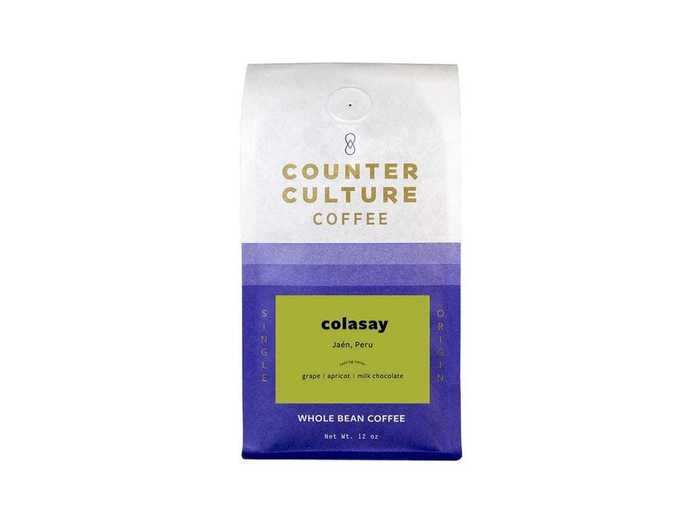
Founded in North Carolina, Counter Culture has been one of the most enduring and consistent specialty roasters of the past 25 years. Environmentalism, sustainability, and supporting coffee-producing communities have been core ethics since the company's inception. And the proof is in the taste — shade-grown and water-processed beans in regions that haven't been big parts of coffee production like Uganda are now becoming more well-known.
I've been a fan of Counter Culture for years and used to order their natural processed single-origin offerings all the time. After a long break, I was ready to be reacquainted.
Origins: Peru, South America (Colasay); Kapchorwa, Uganda (Kabeywa); Timbio, Colombia (La Golondrina)
Varietals: SL-14 and SL-34 (Kabeywa), Castillo and Caturra (La Golondrina)
Roasts: Light-medium (Kabeywa), Light-medium (La Golondrina)
Tasting notes: I opened a bag of their Peru Colasay and was instantly impressed with its floral, fruity aroma, which became more intense while brewing. South American coffee tends to be known for its balanced and chocolatey flavors, but this Peru is an exception. Its fruit-forward profile has notes of apricot and grape, and I could have been fooled into thinking this coffee was grown in Africa. Unfortunately, this one is unavailable, but I also tried others that are still available.
The Kabeywa from Kapchorwa, Uganda shows how investing in coffee-growing communities and environmental resources can lead to excellent coffee in unlikely places. Uganda isn't historically a major player in the coffee production scene, largely due to a lack of access to washing and drying stations necessary for coffee bean production. Counter Culture bought a washing station in 2014 and has been helping the community grow and process delicious and unique coffee since then.
The beans are shade-grown in some of the highest elevations in Uganda. Shade-grown coffee farms not only preserve native biodiversity, but they allow coffee to grow in conditions that produce the highest quality coffee cherries, and therefore, the most delicious cups of coffee. This coffee evokes notes of grape and brown sugar. Although the profile is similar to neighboring regions, this coffee is a very strong entry into the pantheon of East African coffees.
Colombia is also known for producing extremely high-quality coffee and the La Golondrina from Timbio showcases everything that is delicious about the region's output. This coffee leads with a well-rounded, milk-chocolatey sweetness and follows with a hint of cherry. The community responsible for the production of this coffee shows once again that a commitment to sustainable, organic farming practices inevitably leads to better coffee. This is a perfectly balanced single-origin coffee that would be right at home at any breakfast table. It has a depth and balance to it that would please both coffee aficionados and novices alike.
Heart Roasters — Ethiopia Worka Sakaro, Ethiopia Yukro, and Ethiopia Gedeb
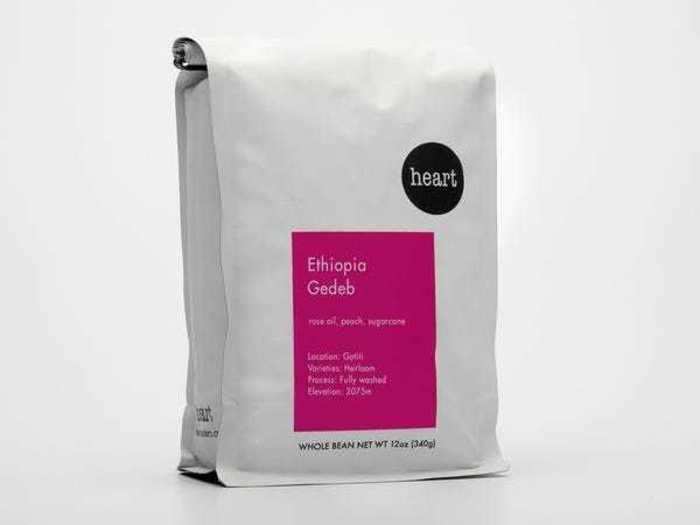
Portland, Oregon-based Heart Roasters has been making "seasonal" roasts since 2009.
Like any other agricultural product, coffee is subject to climate conditions. Coffee is grown near the equator year-round so "seasonality" doesn't refer to seasons we're used to but rather when the beans are harvested.
The term is a metric of the quality in coffee and is really about limiting the length of time between harvest and roasting. It's a collaboration between producers, importers, and roasters to maintain this freshness and make sure shoppers get the highest quality coffee.
Origin: Gedeb, Ethiopia (Ethiopia Worka Sakaro); Agaro, Ethiopia (Ethiopia Yukro); Gotiti, Ethiopia (Ethiopia Gedeb)
Varietal: Heirloom (all three)
Roast: Light
Tasting notes: Ethiopian coffees are usually harvested between October and April, so Heart's Ethiopia Worka Sakaro was freshly harvested when I sampled it. Like many Ethiopian coffees, it's uniquely fruity with notes of mango, white currant, and brown sugar. It's delicious and vibrant, and stands in contrast to other African coffees on this list, which is a testament to the diversity of flavor found in this region.
Unfortunately, seasonality also translates to unavailability for this particular roast. Based on the region and flavor profiles, I'd recommend trying the Ethiopia Yukro and the Ethiopia Gedeb for similar experiences.
Colectivo —Sumatra

The Pacific Northwest has a reputation for leading the way in the specialty coffee movement, but the Midwest has a deep history as well. Colectivo Coffee began their origin story as Alterra Coffee in 1993 in Milwaukee and re-branded as Colectivo in 2013.
One benefit of being in the business for that long is the ability to forge close, longterm relationships with producers at origin. When these relationships are built, importers and roasters are able to work far more closely with producers and have more input on the growing, production, and overall quality.
Origin: Gayo Highlands in Aceh, Sumatra
Varietal: Unknown
Roast: Medium
Tasting notes: Sumatran coffees are known for their distinct flavors that have a complex, rich quality. In contrast to beans from Africa, beans from Sumatra have low acidity, with a syrupy body and earthy undertones. This specific Sumatra is a strong example of what makes the region so unique and recognizable.
Madcap Coffee — Borbón Rosado
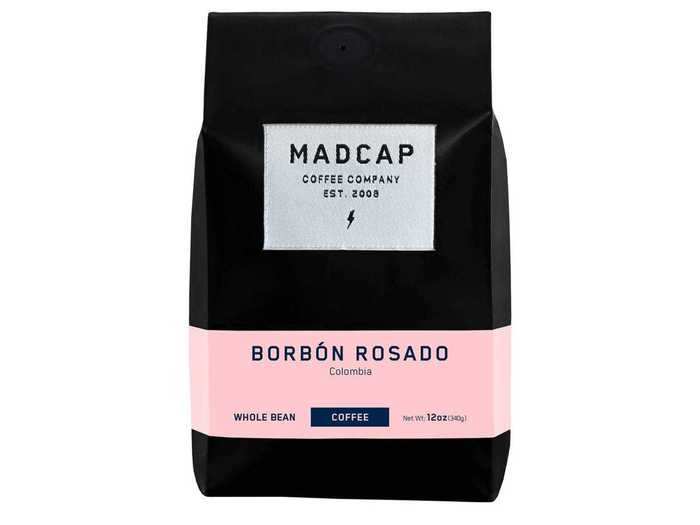
Madcap Coffee was founded in Michigan in 2008 and has been a favorite of mine for years. They taste around 3,000 types of coffee each year and taste-test every batch of coffee they roast. Madcap has a record of roasting a wide array of delicious single origins with distinctive flavor profiles, and are conscious and selective of varietals, making sure they're processed and roasted to perfection for a delicious and exciting cup of coffee.
Origin: Acevedo, Huila
Varietal: Pink Bourbon
Roast: Light
Tasting notes: Madcap's Colombia Borbón Rosado comes from a variation of Bourbon called Pink Bourbon. It also uses an innovative processing method that takes around four days and brings out fruity aromas and flavors. This combination creates a cup that is reminiscent of raspberry or cherry lemonade, and has notes of lavender and chocolate.
How to choose the best coffee
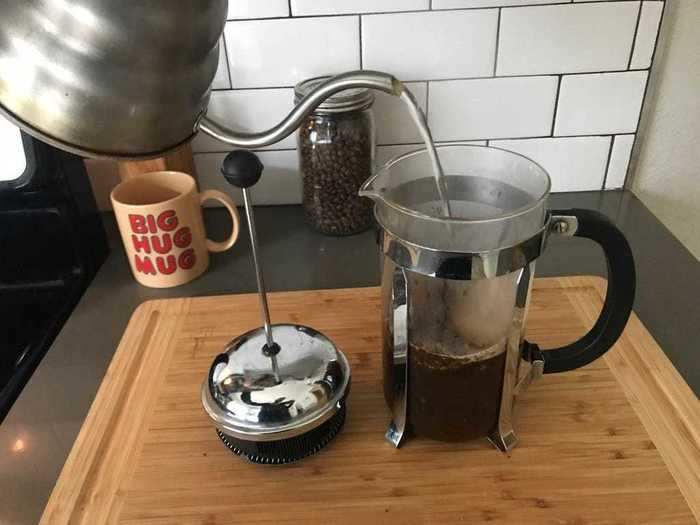
The past decade has seen a major boom in high-end coffee. This proliferation of artisanal coffee is often referred to as "third-wave coffee." You can think of third-wave coffee as being a more culinary or craft approach to coffee. This movement is characterized by a focus on the origin and quality of the beans, the craftsmanship behind the roasting process, and a scientific approach to brewing.
There are a handful of main factors that determine how coffee tastes, though this list is not exclusive, by any means. You should be able to find most of the info on the bag of coffee or at least on the website where you're buying from.
Origin: This is literally the specific region in which the coffee was grown. The flavor of any specific coffee is highly dependent on where it is grown and every region has a unique set of characteristics that are regularly used to define the region. Central American and South American coffees, like those from Guatemala and Colombia, are known for being sweet and balanced. Coffees from Indonesia tend to have a more earthy taste and at times, may even exhibit flavor notes reminiscent of vegetable flavors. African coffees have a tendency to be fruity and floral tasting.
Varietal: Even though coffee is normally referred to as a single plant, coffee has a lot of biological diversity within it. First of all, there are two subspecies — robusta and arabica. All specialty coffee comes from the Coffea Arabica plant, and within that, there are different strains, known in the coffee community as varietals.
Varietals have unique characteristics that contribute to the flavor profile. Some of the most popular ones are Heirloom, Typica, Caturra, and Bourbon. Bourbon, with its reputation for complex and sweet flavors, is probably the most popular and consistently delicious varietal.
Roast: The roast profile is another major contributor to how coffee tastes. Roasters often share how dark or how light the coffee is roasted. Roasting is a complicated craft and every individual batch of coffee is roasted differently to bring out the best possible flavor of each coffee.
Tasting notes: Think of it as being similar to wine tasting. Terms like "juicy," "fruity," "earthy," "chocolatey" are all useful in describing certain nuances of coffee flavor and can be a huge help to aspiring coffee sommeliers who want to better understand and relate to what they're drinking.
How I test coffee
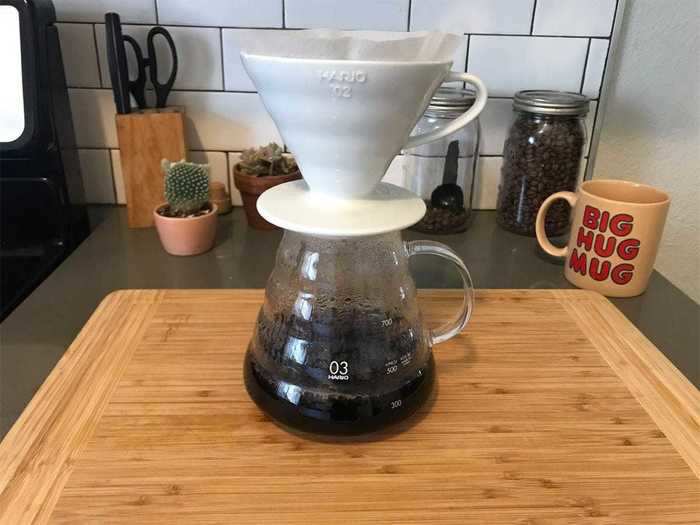
I chose to test and feature single-origin beans because that's one of the hallmarks of third-wave coffee. Single-origin means the coffee comes directly from one farm or lot, so you know exactly where your coffee comes from and you get to experience all the unique flavors from a specific growing area. It can tell you the most about the craft and skill of the people who grew, sourced, and roasted the coffee.
It takes years of training and practice to roast a single-origin coffee to perfection. Almost all single-origin coffees are roasted to a "light" profile, so the natural flavors of the bean are more noticeable and flavors imparted by roasting aren't too dominant.
On the other hand, blends combine coffees from different origins to cover up from what may be an incomplete or unbalanced flavor.
All of the roasters featured here all have a proven track record of roasting high-quality beans. They also currently ship anywhere within the US, and many offer convenient monthly subscription services.
I tested one or two coffees from each roaster specifically for this story, but I've also heard of and tasted them previously during my almost decade-long coffee career — you can be assured that almost anything on their menu will be worth trying. All of these roasters also currently ship anywhere within the US, and many offer convenient monthly subscription services.
I brewed all the coffees with my Hario V60 because it's accessible and easy to use. Anybody can repeat my brewing method at home and taste the same thing that I did. Also, it's a brewing process that provides a very clear cup of coffee and allows all of the nuances of a single-origin roast to shine through. Most of my taste tests were also supplemented with my Bodum Chambord French press. This is also an extremely common and easy brewing method that many people already have access to and it can allow different flavors present in the coffee to be expressed. You can read my reviews of the Hario V60 here and the Bodum Chambord French press here.
Check out other coffee-related guides
The best coffee makers
A great coffee maker can make or break your brew — and your morning. These are the best coffee makers you can buy, whether you want a drip coffee, French Press, espresso, pour-over, or cold brew coffee maker.
The best French Presses
You can brew coffee in a number of ways, but many caffeine addicts swear by the French Press method. Of all the French Presses we researched, these are our favorites.
The best stovetop espresso makers
After hours and hours of research, testing, and countless ensuing caffeine overloads, these are the best stovetop espresso makers we've found to make strong, delicious coffee right at home.
READ MORE ARTICLES ON
Popular Right Now
Popular Keywords
Advertisement